Okay. So you’ve heard the news. Amazon FBA is where it’s at, right? Well, unless you’ve been living under a rock, you know that Amazon is completely dominating the ecommerce space. In fact, in the United States alone, it’s estimated that for every dollar spent online, 50 cents of it runs through Amazon.
Yes. I said 50 cents on the dollar. That’s half of the spend of an astronomical amount! However, another point to understand is that most of the items you see being sold on Amazon are actually sold by people like you and me and not by the online behemoth itself. Not only are they sold on Amazon, they’re also fulfilled by Amazon. Hence the term FBA.
So, here’s the question. If you’re a complete beginner, where do you start? How do you sell on Amazon FBA if you’re completely brand new and what does the process actually look like? How do you actually make money selling on Amazon’s platform and how much does it actually take to get started?
A Step-by-Step Beginner’s Guide To Amazon FBA
Before you can get started, you likely have several questions. Maybe these questions have held you back. Just maybe they’ve lingered in your mind for long enough that you’re finally trying to uncover the truth. So let me break it down for you here in a step-by-step fashion so that you can understand just what it takes to start selling today.
Can I Sell On Amazon If I Don’t Live In The U.S.?
Quite possibly, one of the biggest questions that most people have is whether they can get started selling on Amazon if they don’t live in the US. Clearly, the US is the biggest and most lucrative market in terms of online sales for anything. However, you don’t have to live in the U.S. to sell products on Amazon.
As long as you have a bank account from a country that is supported by Amazon, and is enabled for payouts, you can sell on Amazon in the U.S. Note that some of these require Hyperwallet. For the most updated version of this list, please click here.
Countries that are currently supported are the following.
- Albania (requires Hyperwallet)
- Argentina (requires Hyperwallet)
- Australia
- Austria
- Belgium
- Bangladesh (requires Hyperwallet)
- Brazil (requires Hyperwallet)
- Bulgaria
- Cambodia
- Canada
- China
- Columbia (requires Hyperwallet)
- Croatia
- Cyprus
- Czech Republic
- Denmark
- Estonia
- Faroe Islands
- Finland
- France
- Germany
- Greece
- Greenland
- Hong Kong
- Hungary
- India
- Indonesia (requires Hyperwallet)
- Ireland
- Israel (requires Hyperwallet)
- Italy
- Japan (requires Hyperwallet)
- Jordan (requires Hyperwallet)
- Latvia
- Laos (requires Hyperwallet)
- Lichtenstein
- Lithuania
- Luxembourg
- Malaysia (requires Hyperwallet)
- Malta
- Mexico (requires Hyperwallet)
- Monaco
- Morocco
- Nepal (requires Hyperwallet)
- Netherlands
- New Zealand
- Nigeria (requires Hyperwallet)
- Norway
- Pakistan (requires Hyperwallet)
- Philippines (requires Hyperwallet)
- Poland
- Portugal
- Romania
- Russia (requires Hyperwallet)
- San Marino
- Singarpore
- South Korea (requires Hyperwallet)
- Spain
- Sri Lanka (requires Hyperwallet)
- South Africa (requires Hyperwallet)
- Sweden (requires Hyperwallet)
- Slovakia
- Slovenia
- Switzerland
- Taiwan (requires Hyperwallet)
- Turkey (requires Hyperwallet)
- Thailand (requires Hyperwallet)
- UAE (requires Hyperwallet)
- United Kingdom
- United States
- Vietnam (requires Hyperwallet)
Can I Sell On Amazon If I Am Not A Business?
The short answer is yes. You do not need to be a business to sell on Amazon. However, you will need to go through an extensive verification process to get approved. In most cases, it is best to setup some form of a business to manage the income and expenses of selling retail products through Amazon FBA.
Always consult with your local attorney and tax advisor for the best strategies forward. However, if you intend to sell anything on Amazon (or anywhere else for that matter) you should consider creating some entity that will mitigate your liabilities. In the United States, we call this an LLC, or a Limited Liability Company.
In the UK, there is something similar. It’s called a Private Limited Company. However, it’s acts very much similarly to the LLC in the US, protecting the personal assets of the primary founder or director (most likely you). Most countries that promote business have something similar to an LLC. Be sure to figure out what it is in your region.
Can I Sell On Amazon If I Am Under 18-Years Old?
No. You cannot sell on Amazon if you are under 18-years old. In order to sign a contract, you need to be 18. However, the only alternative to this is to have your parents or guardians setup a company that you can then use to sell items on Amazon FBA. However, even then, they will need to go through the verification process, so it won’t really be your account.
Still, if you’re not deterred at all by that and you still want to sell on Amazon, even if you’re not 18-years old, you can most certainly do it. If your parents are supportive of what you are doing (and why shouldn’t they be since you’re a budding entrepreneur) then all the more power to you!
Can I Sell On Amazon Even If I Don’t Have A Product To Sell?
Yes. You can most certainly start out with that intention. Maybe you’ve heard about other people making money online through Amazon FBA and you want to join the fray. And you very may well setup your Amazon Seller’s Account before you even have something to sell. But you’ll need to quickly find a good product if you want to make any money at all.
So, once you’ve decided to sell, you have to start scouring the annals of Amazon’s best seller lists to discover an in-demand product you can sell right now. Keep in mind that you’re going to have to find the right balance here between your upfront costs and your anticipated returns on your investment.
In the beginning, you’ll probably find this hard to do. Costs are difficult to measure until you get into the swing of things. But keep in mind that you’re going to have to shell out for some inventory here. So, if you end up picking a pricey product to sell, it’s going to be costly. Why? Because you have to secure a solid amount of inventory for that product.
You also have to do things like checking trademarks, patents, securing manufacturing, branding, production, shipping and so on. If it seems overwhelming right now, it’s likely because you’re just starting out. But there is light at the end of the proverbial tunnel. And that light equates to the ability to make an incredible amount of money by tapping into the world’s largest ecommerce store.
Step 1: Setup Your Amazon Seller’s Account

Your first absolute step to selling on Amazon FBA is to actually setup a seller’s account. You can’t do much without this. In essences, it’s your customer profile on Amazon, giving you the right to actually sell. But keep in mind that there’s an exhaustive process for going through the verification stages.
Keep in mind that you’re going to need things like your driver’s license (front and back), bank statements, your company’s EIN (tax ID), along with other verification documents. Be prepared to go through the wringer, so to speak.
However, once you’re up and running, you’re now inside Amazon’s ecosystem and you can sell just about anything. Keep in mind that there is a monthly fee associated with this. Currently that fee sits at $39.99 per month plus what they call a variable closing fee. Now, if you plan to sell less than 40 items per month (which I hope you don’t), then the fee is $0.99 cents per item.
You can read more about the fees on the Amazon Seller’s Central website located here.
Step 2: Identify Profitable Products You Can Sell
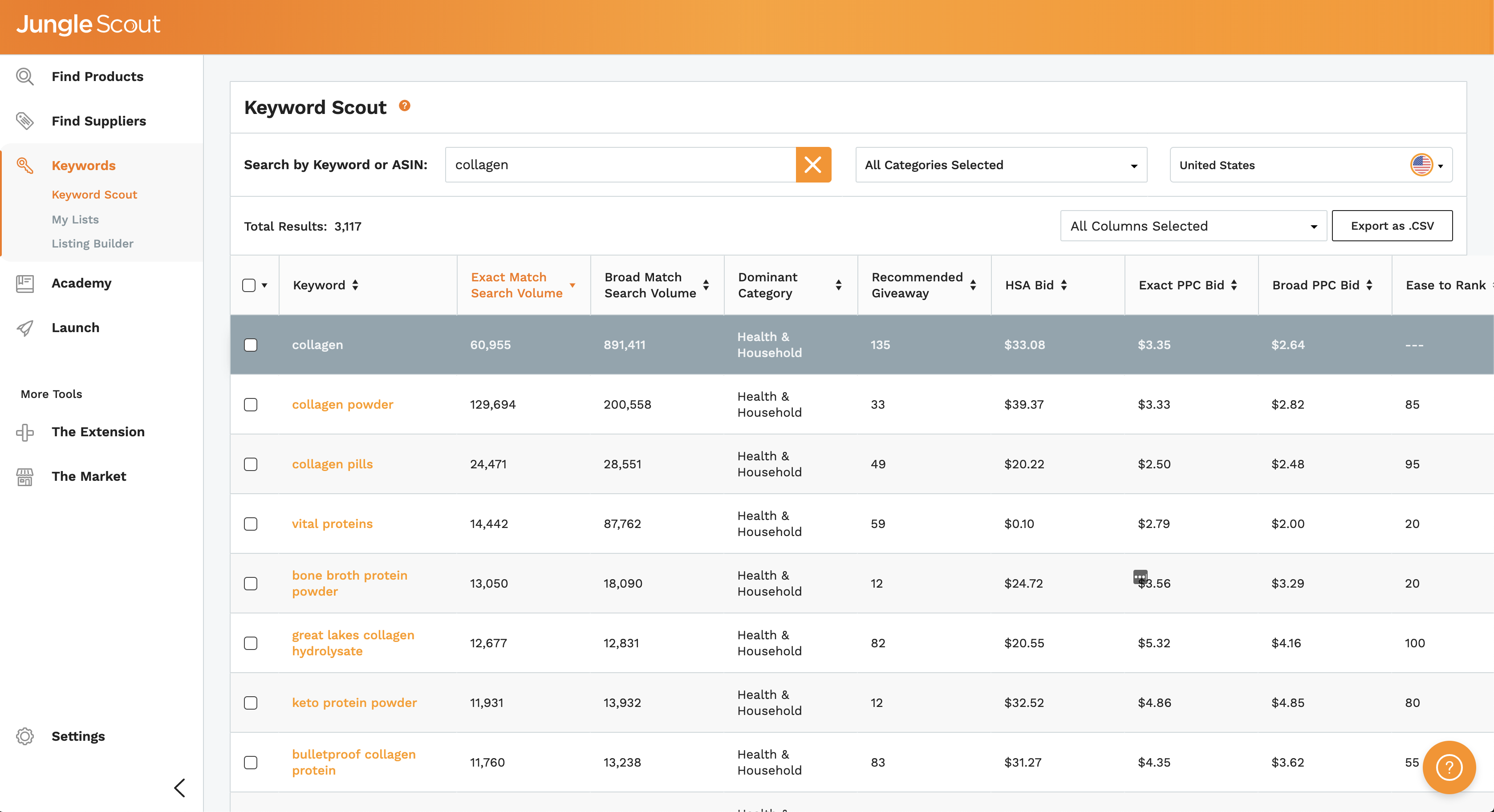
There are a few tools and resources that you can use to identify profitable products that you can sell on Amazon FBA. The first tool is called JungleScout, which I talked about here in this post. The second tool is called Sellics. Both tools are used for researching the demand and potential profitability for selling products on Amazon.
At the end of the day, all you really have to do is to reverse engineer where the demand is for products. It’s not difficult to do. In fact, you can use a variety of tools to do this. Whether its JungelScout, Sellics or some other tool, doesn’t really matter. As long as you can gauge the overall demand for products, that’s what’s important.
Now, keep in mind that although these tools will give you insight into demand on Amazon’s platform, they are not directly piping through data. Amazon has no relationship with these partners and they’ve built their own backend systems to gauge things like demand and potential profitability of products.
Checking the Amazon Best Seller Rank
Another way to identify the potential for profit is a strategy that I’ve used repeatedly since 2013. It’s still solid today. All you have to do is check the best seller rank of the products on their respective categories. You can loosely determine just how much money a particular product is making based off of the best seller rank.
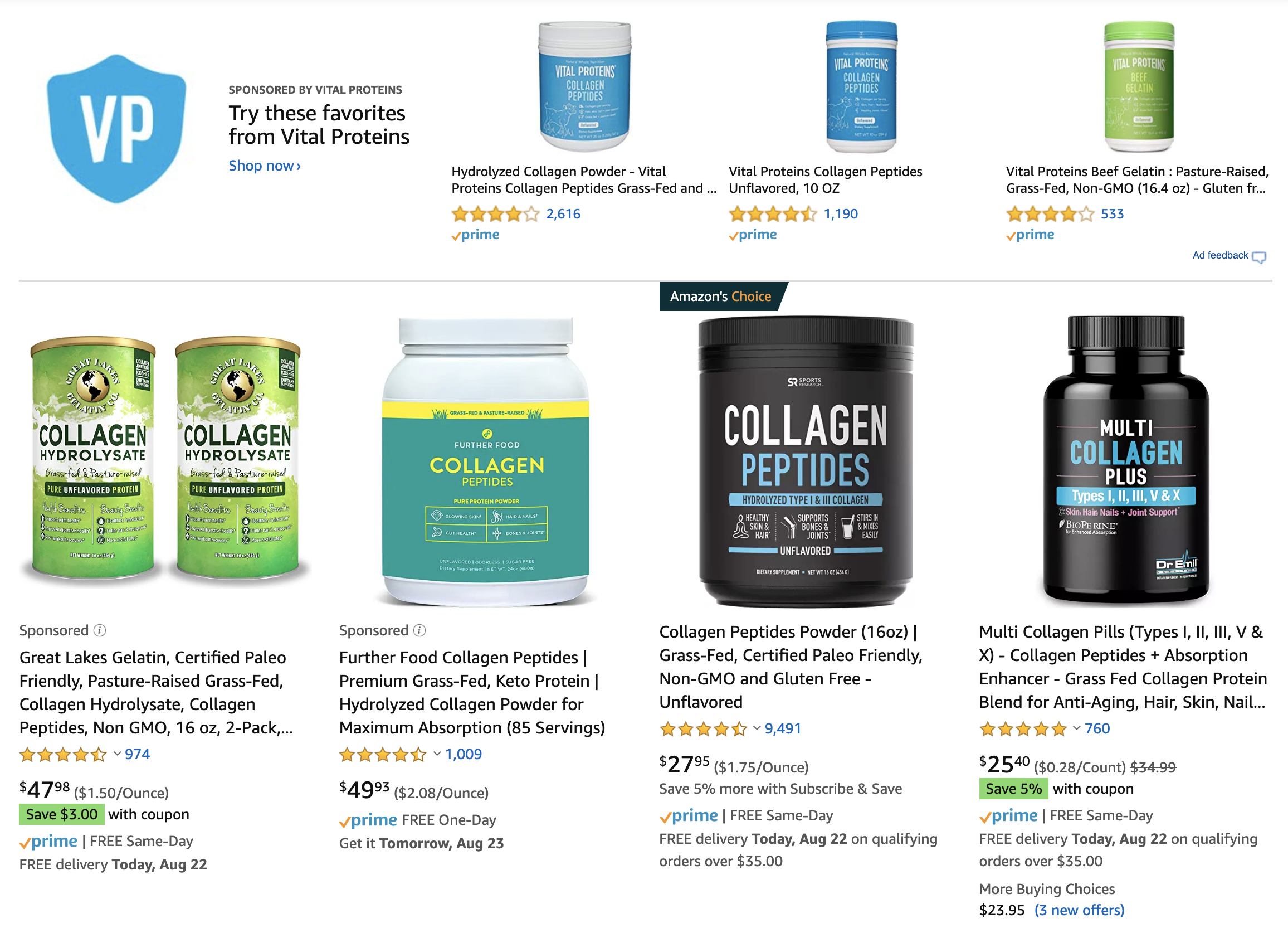
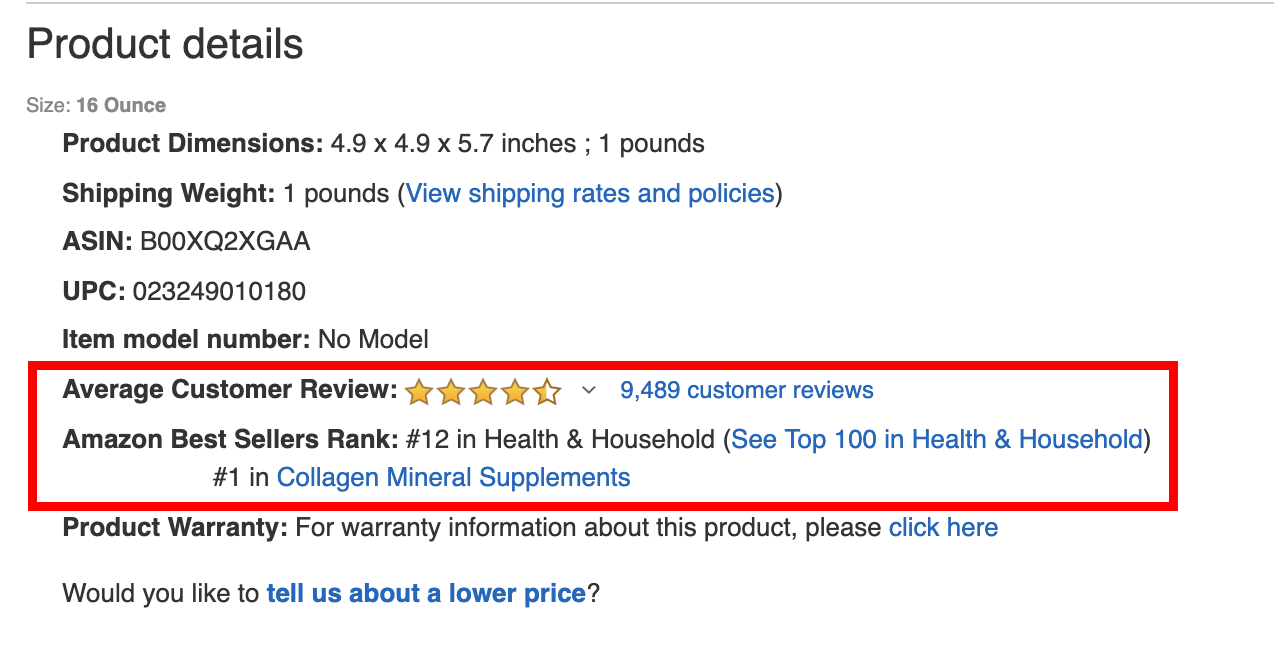
The above best seller rank is for a collagen product with thousands of reviews on Amazon. As you can see, the product listing page displays the best seller rank of the product, which is #12 (but might have changed by the time you read this post). Regardless, all you have to do is take this information and plug it into JungleScout’s sales estimator tool.
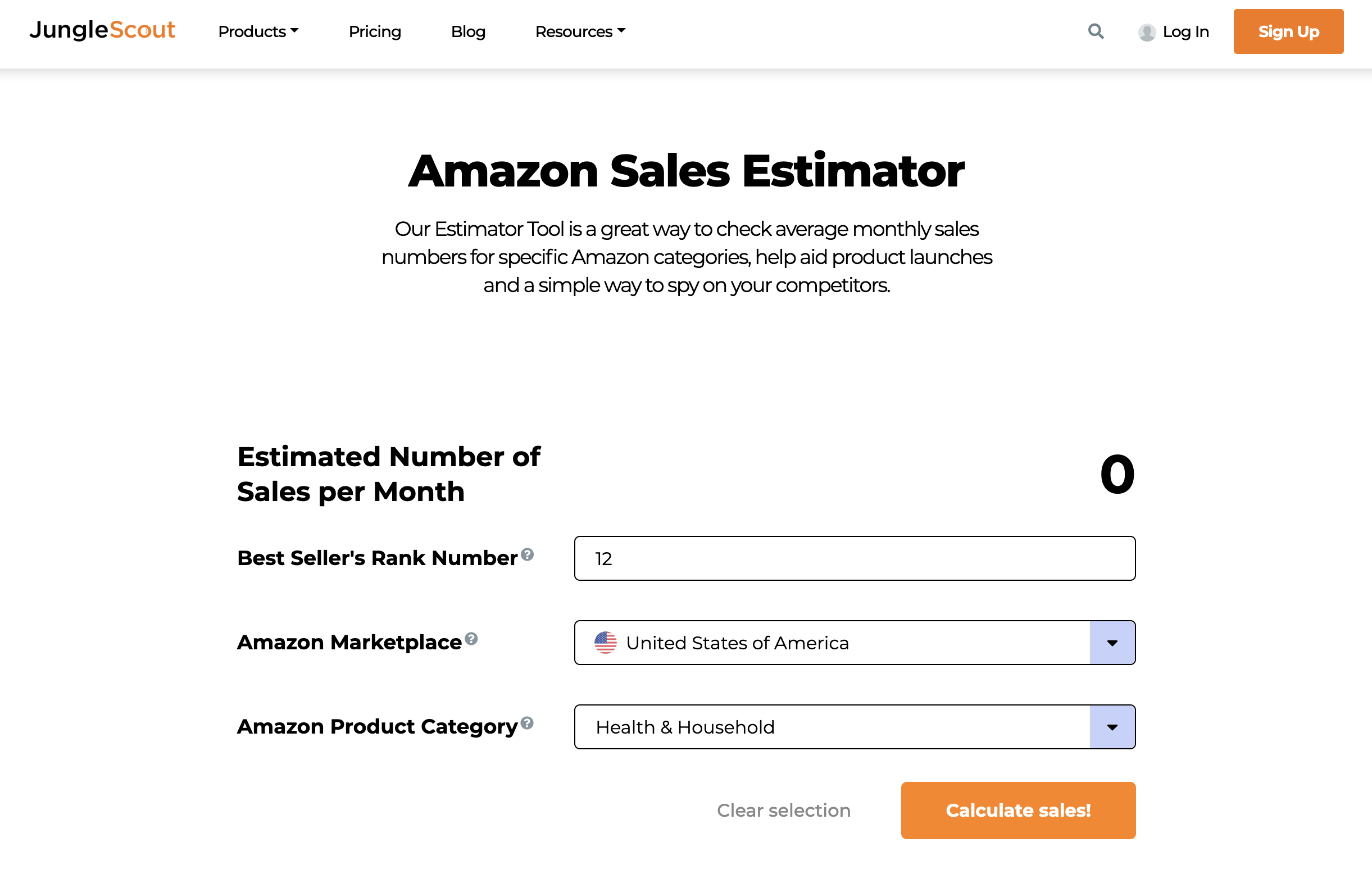
Yes, there are other tools you can use as well. However, when you conduct this search, we determine that Collagen Peptides Powder is selling 23,670 units per month. At a list price of $27.95, that equates to a total estimated monthly sales figure of $661,576.50. Now, obviously, this is an extreme example, but still very valid.
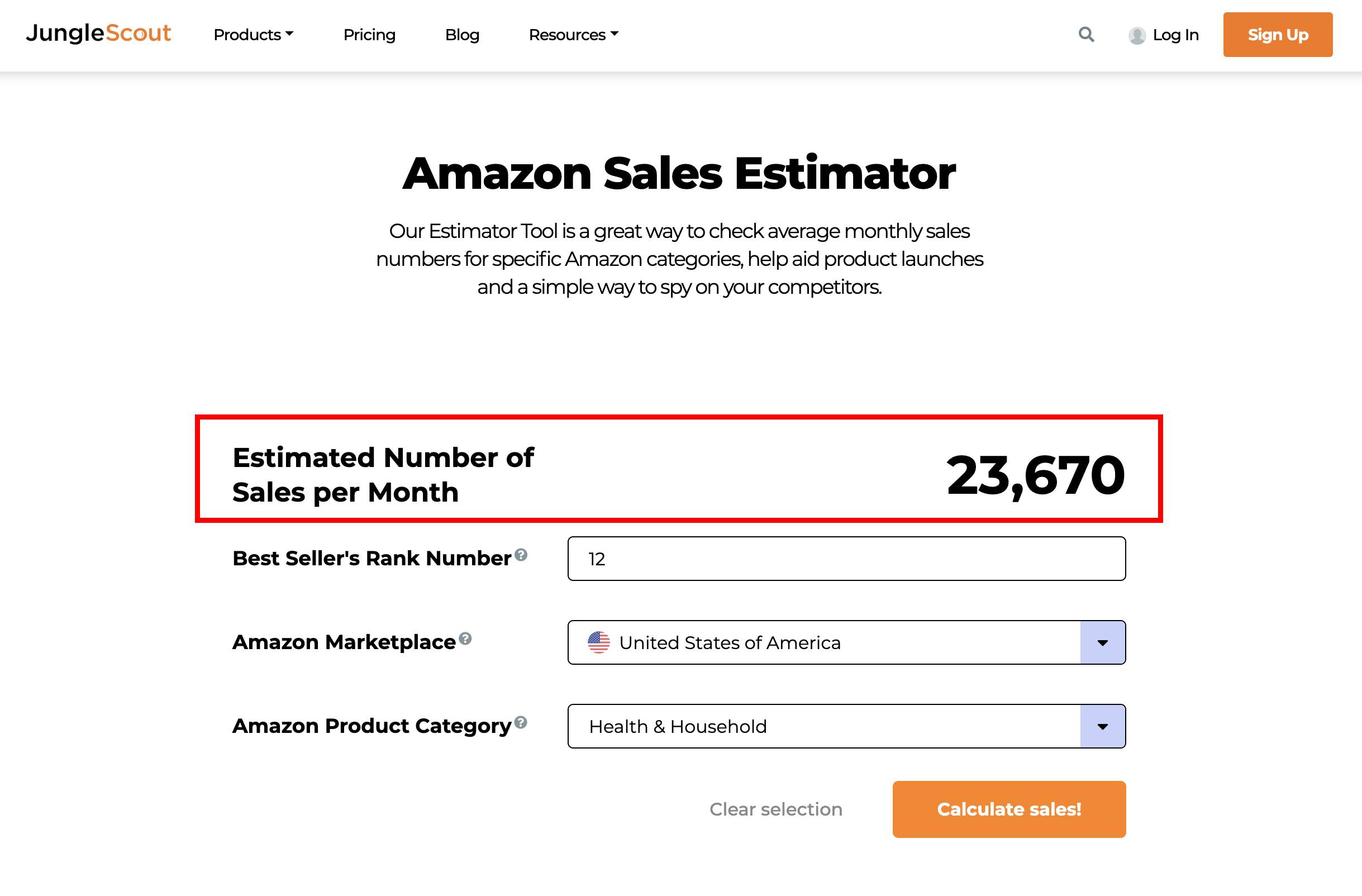
Step 3: Organizing Suppliers & Manufacturers
Clearly, finding profitable products to sell isn’t just about estimating the total monthly sales. You need to figure out your costs involved in manufacturing this product. How do you do that? You simply have to work backwards. Now, this is an example of a supplement, which you can manufacture in the United States as opposed to China.
If you were going to pick an everyday product from Amazon, you could easily find suppliers selling that very product on Alibaba. Keep in mind that if you source those products from Alibaba, you’ll need to factor in some lead time. It can take several months for you to receive inventory from China.
How Long Will It Take To Obtain Your Inventory From The Supplier?
Consider the fact that it’s not just about manufacturing the products. It’s also about branding them and getting them ready for delivery to Amazon. So how do you go about doing all this? How do you find manufacturers in China, who are worlds away, or how do you go about sourcing your supplier from the US?
Well, the answer isn’t simple nor is it straightforward. This is one of the most challenging parts of the process, and also the place where most people who we’ll call “dabblers” drop off. It can be frustrating communicating during this process. It can feel like no one is responding to you or it’s taking forever. But understand that it’s part of the process.
Searching Suppliers On Alibaba
One important thing to note when searching on Alibaba.com is that you’ll find lots of the most popular products for sale that are also available on Amazon. These products are also often a fraction of what they cost on Amazon. However, you have to also understand that some of these products are being sold by middlemen. And you don’t want to deal with middlemen.
Pay very careful attention to the search parameters when you search on Alibaba and be sure to change the search criteria to “suppliers” rather than “products”. When you do this, you’re dealing directly with the suppliers and avoiding the middlemen. This will help you to source quality products fast without having to haggle with people who are going to simply take a “cut”, so to speak.
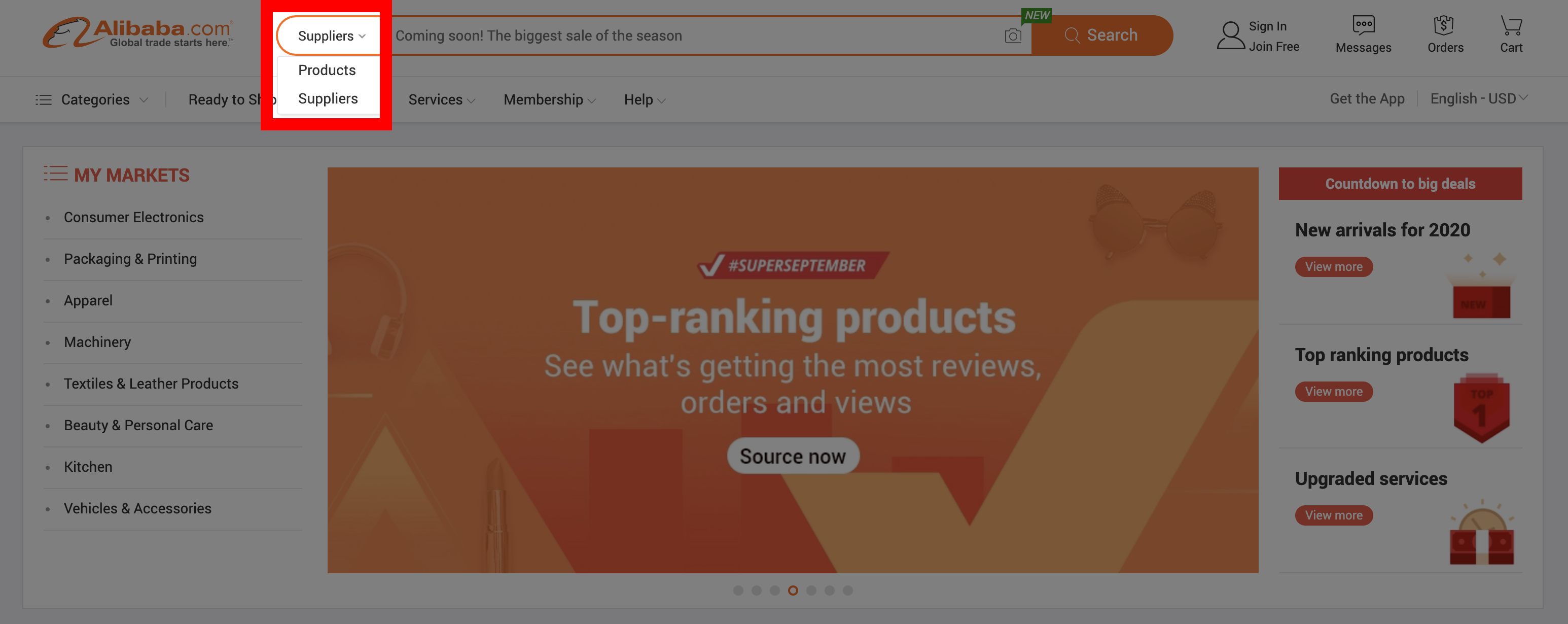
Once you conduct your search, you need to take a look at how many years the suppliers have been in business and what their response rate and ratings are. It’s all very clear when you do a search for any product on Alibaba. Also, keep in mind that if you want to order sample products (i.e. one-off samples) you can use AliExpress.com.
How To Ask For RFQs From Suppliers On Alibaba The Right Way
One other brief point to note is that you should be asking for Requests For Quotes (RFQs) from at least 3 different suppliers. Do not rely solely on one. And, when you submit your request for an RFQ, you have to be professional about it. You can’t simply send a brief message to them. If you don’t request it the right way, then it could end up costing you in the long run.
When you send your RFQ to at least 3 different suppliers, you have to be very specific with them. You have to take the product that you located on Amazon as a best seller or based on some other metric, and you have to ask for specifications based on that product. And you have to be very detail-oriented in your request.
You should provide the following:
- Your name, position and the company you represent (better to sound as professional as possible if you want a serious response)
- Detailed product specifications, keeping mind that internal quality guidelines might not be as stringent as you’d like, especially if you’re requesting things that are outside the normal OEM (original equipment manufacturing) guidelines of the supplier
- Ask about compliance standards, especially if you are manufacturing something that is regulated by US or EU authorities
- Quantity requested – keep in mind that the larger the order quantity, the lower the price, which is why it’s good to ask for two separate quotes, one for 500 units and the other for 5000 units
- Incoterm shipping type, which refers to the point in time when the cargo is transferred to the buyer from the manufacturer or supplier
There are far more factors to consider. This is just a start. Plus, you have to ensure that you send a professional letter. You should consider doing this on company letterhead with a signature from you at the bottom. This can be sent as a PDF attachment.
Step 4: Trademarks, UPCs & Shipping Plans
Once you’ve sorted out your inventory, there are numerous steps you need to take before your inventory can land at Amazon’s warehouse. There are steps you need to take such as branding, trademarking, UPCs and shipping plans. These might all sound foreign to you right now, but they are all fairly straightforward.
One thing to understand off the bat is that you shouldn’t try to do everything yourself. You should certainly familiarize yourself with the entire process, but you need to create your team at this stage if you’re serious about succeeding on Amazon’s platform.
First and foremost, you’ll need the following people:
- Graphic designer – fiverr.com, freelancer and 99designs are good resources for finding good graphic design for competitive prices, and you’ll need them for branding, logos, labeling, etc.
- Attorney – okay, maybe not the most expensive one, but you need to consult with someone to ensure you’re not making any costly mistakes that could come back to haunt you (you could also use avvo.com or upwork.com to find low cost legal advice)
- Accountant – You should figure out how to handle the income and expenses based on your location
- Virtual assistant – You should hire a VA on Fiverr or Upwork to help you track and maintain everything associated to your new Amazon FBA business
Your team is important to you conducting everything necessary to launch your Amazon FBA without having to do it all yourself. You see, here’s the biggest thing that often holds us back. It’s sheer overwhelm. And whey you get overwhelmed, you defer to other things that are comfortable or more habitual for you.
Even when you know, deep down inside, that you need to take action, you’re stifled. You procrastinate. Waste time. And avoid doing the things that you know will give you the biggest results in the shortest period of time. Then, when you look back, not only did you mismanage your time, but you realize you wasted so much time veering off track.
Step 5: Optimizing Your Amazon FBA Listing
Once you’ve gotten your products to Amazon’s warehouse (and even before) you can begin the process of optimizing your listing. While this isn’t brain surgery, it’s certainly a process. Now, if you’re at all familiar with what’s called Search Engine Optimization (SEO), then you likely know that optimizing a listing for organic search is more time consuming than anything.
The reason why? Search engines like Google and Amazon know all the ways people try to game the system now and have rigged things very much so in a fashion where it’s nearly impossible to break the rules without major blowback. What does that mean for you, a lone Amazon FBA seller? It means that you have to leverage the A9 algorithm rather than try to game it.
In terms of ranking on Google, your likelihood of ranking at the top has very much to do with the quality of your content and the authority of your domain. On Amazon, it’s somewhat similar. It boils down to the quality of your listing and the authority of your product. In this case, authority means sales and reviews as opposed to high-quality backlinks.
Utilizing Keywords
One of the most important factors of your Amazon listing are the keywords. Ever notice popular listings that seem to have multiple keywords in the title of the product itself? However, unlike Google, what you’ve likely also noticed is that the actual descriptions themselves are not that beefy. In most cases, they’re rather slim and sleek.
Instead, they leverage things like infographics heavily. You’ve also probably seen the questions and answers section as well. Now, the overall quality of your listing is important, but it all starts with those keywords. You have to do the proper research on the keywords and make sure that you’ve integrated those directly into the product title and description.
However, be careful about not putting too many different keywords. Don’t try to keyword bomb it. That won’t work and it won’t help you. They have to be relevant keywords that actually pertain to the listing, and not an attempt to spam as many keywords into the title and description as possible.
Judging A Book By Its Cover
Okay, so maybe you’re not selling books. But pictures are incredibly important. Because, that’s what initially stands out. If you have low-quality images, you’ll have a low-quality listing. Not just because it looks bad, but because you’ll lack a high click-through-rate. While there are a number of factors involved, here, you have to pay attention to the details.
Make sure that you get high-quality product photography. Yes, it’s going to increase your costs. But it’s one of the cornerstones of having a solid listing and being able to move mass quantities on Amazon’s FBA platform. So, how much should you invest? This will run you anywhere from $300 to $800 for high-quality imagery done by a professional.
Want To Learn More?
Hope you enjoyed this step-by-step walkthrough for getting started as an Amazon FBA Seller. If you want to learn more, I invite you to join my free masterclass, where I reveal the in-depth strategies and tactics that have helped us create a 7-figure Amazon FBA business.